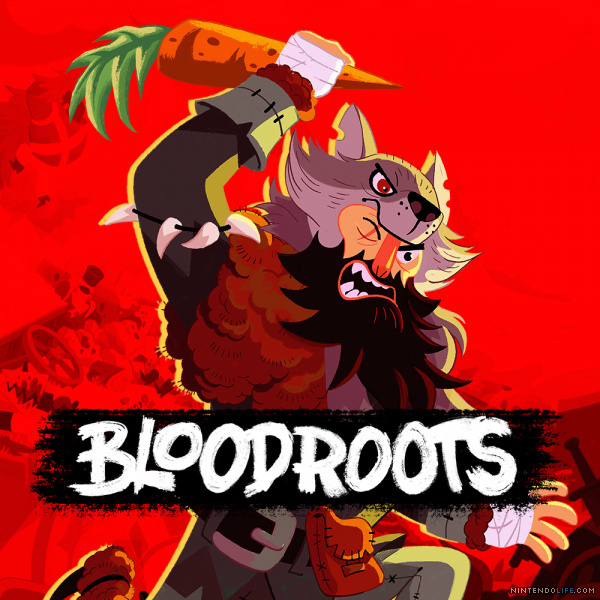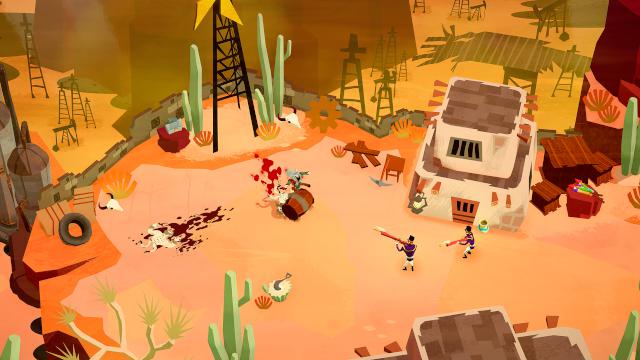
Mr Wolf is dead. At least that’s what his enemies thing. Shot in the head, and left in the wilderness, his former friends walk away. That is the end of Mr Wolf.
Only it isn’t. You, Mr Wolf, want revenge. Badly. You will get that too, by killing absolutely everything and anything on your way to, well, kill your former friends.
This is as much plot as you get with Bloodroots, and it doesn’t really matter as once you get down to the business of killing everything, your priority is finding the next thing to use. By that, I refer to the core component of Bloodroots – the ability to use everything and anything as a weapon.
Walking past a fence, you can pick up a fence post and it becomes a smashing tool. An axe stuck in a tree where a lumberjack is perhaps taking a break? An obvious weapon. A row boat with some helpfully abandoned oars – good range. Weapon. A ladder? Helpful for climbing. Also a weapon. Leg of lamb? Weapon.

You get the point now. The core gameplay component of Bloodroots is that you pick something up, smash someone with it until it breaks (usually one or two hits) then pick up something else, and resume the smashing. The trade-off is that they too, can one-hit-kill you. What becomes apparent quickly is that Bloodroots gameplay look is a run-attack-die-repeat method which pulls back it’s obvious carnage veneer into more of a violent-finesse puzzle game.
This became obvious to me after the first few stages, where I was struggling to make a jump across the gap. What I had to do was kill the first few baddies with some basic weapons, before picking up a sword. Certain weapons have a specific attack mode – the sword lets you dash over a distance and stab enemies. This dash is needed to get you over the gaps I couldn’t jump, so I had to prioritise the use of my tools in order to get through.
What persists is this strange balance between fast-paced fury, engineered design and trial-and-error. When you’re storming through levels, smashing and killing things, it’s excellent. Like an elegant dance, it feels skilful and always cool. But these moments quickly give way to instant death and forcing a slower more considered pace until you realise the ‘solution’. The pacing is the biggest problem here, and boss battles have the same issue. The pace changes, a new approach is needed – the struggle here is that Bloodroots actually manages to evolve that core concept really well.
As your move through the game, enemy and weapon types become a lot more varied and throw up a larger number of options on how to play. It’s such a shame then that those great fast-paced moments reduce to a slog.
This frustration sums up my time with Bloodroots. Often I’d fire it up, have a great time for a few moments then get frustrated and turn it off. It looks great and sounds equally good, with the crunching and smashing noises appropriate brutal, but those moments of silence and decision are all the more painful.
It’s a tough one to recommend. Whilst it’s fun in bursts and not a bad game by any means, it’s pretty annoying by its own design. Therefore, I’d suggest perhaps waiting till you have some time on time hands and are feeling patient before diving in.
Reviewed on PS4


Leave a Reply